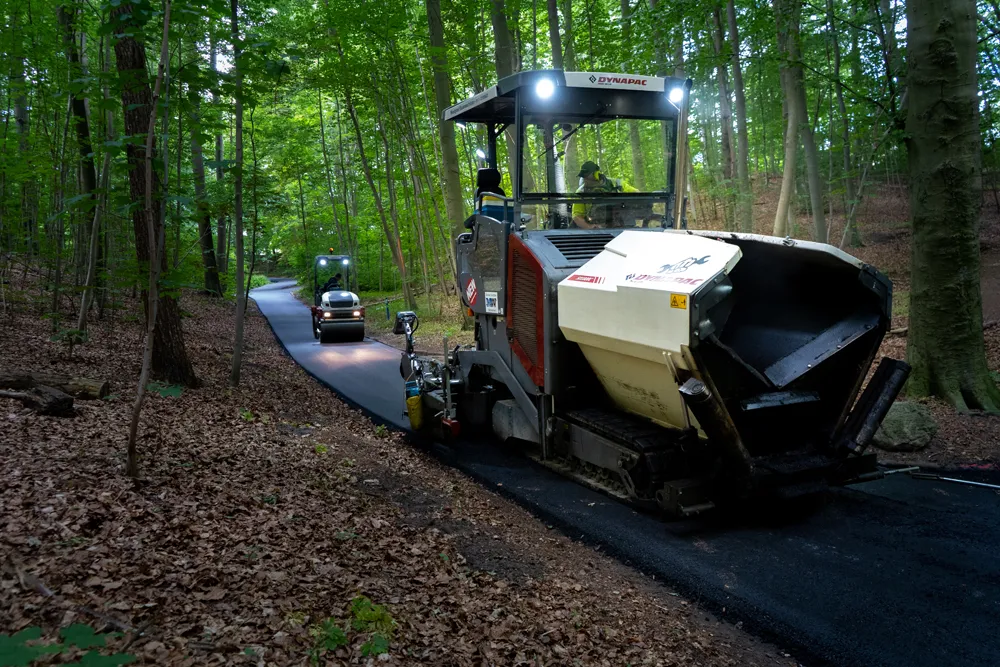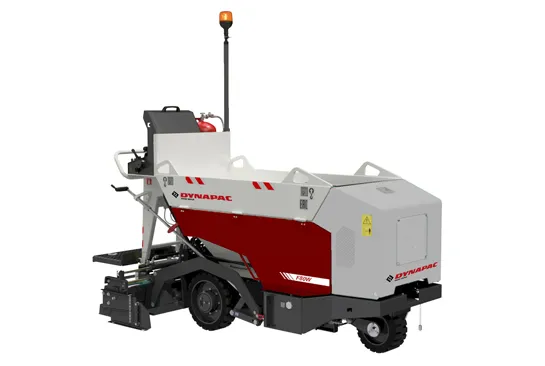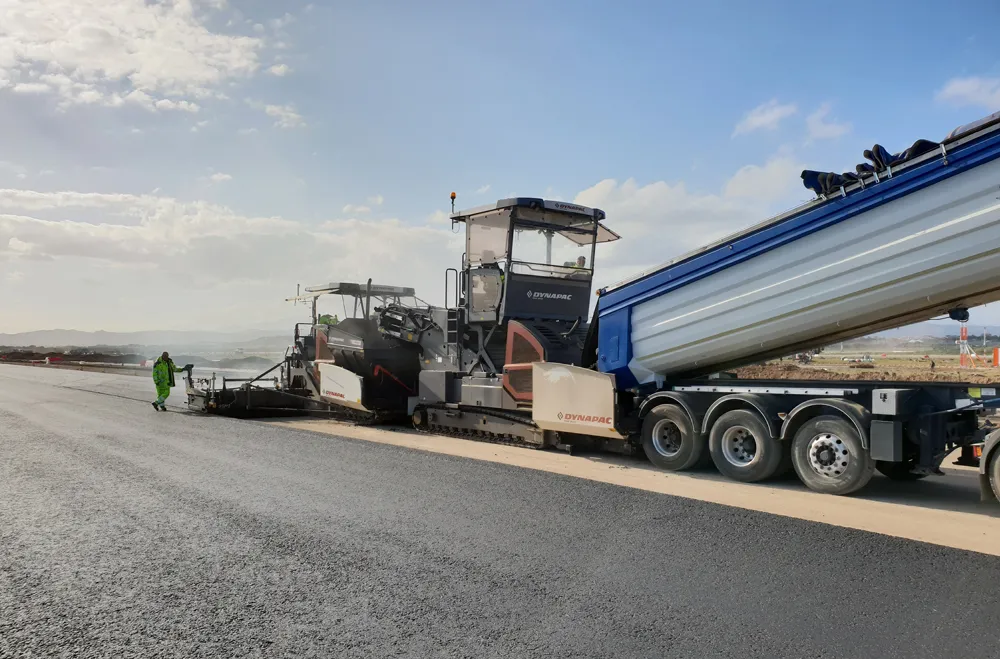
One thing about this job however, was very different: Due to road restrictions, there was no chance to ensure material feeding from the top of the hill enabling uphill paving. The customer had used the machine for a long period and was convinced of its capabilities and decided to meet this challenge in an uncommon way: Downhill paving.
The material was been delivered by small lorries which were able to keep a continuous asphalt flow from the coast line and delivered it to the machine paving downhill. As the paving process started it became clear already after two meters of paving that there was no further issues to be expected based on the slope the machine was paving at: The V3500 TV E Screed was floating absolutely stable and delivering a perfect mat on both layers (subbase and wearing course). The crawler system ensured perfect traction also at a slope of 30%. The material feeding system inside the machine had no trouble with transferring the asphalt in front of the screed. The auger and material guiding system was been able to hold the material in the auger area preventing it from falling to the front. Various comfort options like the emulsion spray system, the fume suction device, comfort seats, the advanced Mobamatic leveling system and the Pave Manager 2 operating system made the job easy for the very experienced paving crew. The job site manager was impressed: “You didn’t even notice that you were paving downhill! The traction was enormous and due to the compact size of the machine and its maneuverability we had absolutely no issues to reach all corners on this small park side project.”
The SD1800 paver series offers the standards of a highway class paver in a compact size without any compromises.
Sponsored content produced in association with Dynapac









